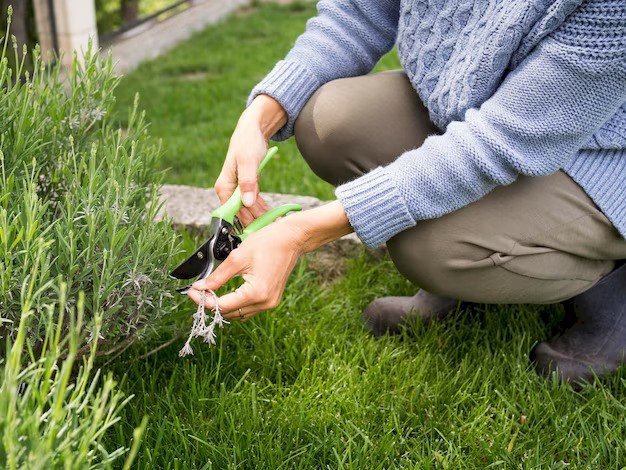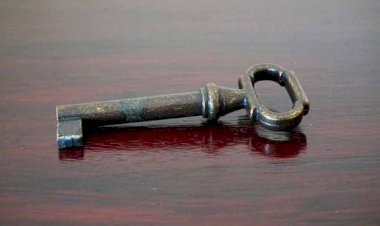Top Lawn Care Tips UK 2025 | Healthy Garden Guide
Discover the best lawn care tips for UK gardens in 2025. Learn how to grow greener, healthier grass with easy, seasonal steps and expert advice.

In the UK, where wet winters and dry summers are becoming more common, caring for your lawn the right way is key to having a beautiful, green garden. A well-kept lawn not only looks great but also improves soil health, supports pollinators, and increases your property value. In this 2025 guide, you'll learn step-by-step tips to keep your grass healthy all year using simple tools and proven methods.
1. Look at Your Lawn Before You Start

Image source: pinterest.com
Every lawn is different. Before doing anything, check the condition of your grass:
-
Are there bare or yellow patches?
-
Is the lawn soggy, dry, or hard?
-
Are weeds or moss taking over?
By looking at these signs, you can understand what your lawn needs. For example, moss means poor drainage or too much shade. Weeds often mean your grass is weak or your soil is too dry.
2. Test the Soil for pH and Nutrients

Image source: pinterest.com
Healthy grass starts with healthy soil. In 2025, soil testing has become easier with affordable test kits available at most UK garden centres and online. Grass prefers a pH between 6.0 and 7.0.
What to check in a test kit:
-
pH level (acid or alkaline)
-
Nutrients like nitrogen, phosphorus, and potassium
If your soil is too acidic (low pH), add lime. If it's too alkaline, sulphur can help. Correcting the soil ensures your grass can absorb the nutrients it needs.
3. Water Deep, Not Often

Image source: pinterest.com
Due to water shortages in parts of the UK, watering your lawn wisely is more important than ever. According to the RHS, watering deeply once a week is better than light watering every day.
Tips for smart watering in 2025:
-
Use a sprinkler with a timer to save water
-
Water in early morning or late evening to reduce evaporation
-
Aim for about 2.5 cm of water per week (use a rain gauge to check)
4. Don’t Cut the Grass Too Short

Image source: pinterest.com
Mowing is one of the most common mistakes. Cutting too low can damage your grass and allow moss and weeds to spread.
Best mowing tips for UK lawns:
-
Ideal height: 2.5 to 4 cm
-
Never cut more than one-third of the blade length
-
Leave grass longer in hot or dry periods
Keep blades sharp to make clean cuts—this helps the grass heal faster.
5. Feed the Lawn at the Right Time

Image source: pinterest.com
UK grass needs food to stay green and strong. Use fertiliser based on the season:
| Season | Best Fertiliser Type |
|---|---|
| Spring | High in nitrogen for growth |
| Summer | Balanced feed for colour & strength |
| Autumn | Low nitrogen, high potassium to prepare for winter |
Apply fertiliser after rain or watering so the soil absorbs it better. Overfeeding can burn the grass, so always follow the label.
6. Fix Bare or Thin Patches with Overseeding

Image source: pinterest.com
Overseeding helps thicken your lawn and fill in patchy areas. It also stops weeds from growing.
When to overseed in the UK:
-
Best done in late spring (May) or early autumn (September)
-
Choose seed mixes made for the UK’s cool climate
Many UK gardeners in 2025 use tools like grass seed, lawn feed, and moss control products available from MOOWY to support healthy lawn growth.
7. Remove Moss and Weeds

Image source: pinterest.com
Moss loves damp, shaded areas. Weeds grow in weak or thin grass.
How to deal with moss:
-
Scarify your lawn (rake out moss) in spring or autumn
-
Improve drainage and light to stop moss from coming back
How to deal with weeds:
-
Use a selective weed killer made for lawns
-
Pull out weeds by hand if there are only a few
-
Apply treatments during dry weather with no rain forecast
Read Also: 15 Essential Gardening Tools Names for Every Home Gardener in 2025
8. Let the Soil Breathe (Aeration)

Image source: pinterest.com
Aeration helps your lawn grow better by letting air, water, and nutrients reach the roots.
When to aerate:
-
Once a year in spring or autumn
-
Use a garden fork or hollow tine aerator
-
Great for lawns with heavy clay soil or foot traffic
New aerator shoes and electric aerators are now more affordable in 2025, making this step easier than ever.
9. Don’t Always Collect the Clippings

Image source: pinterest.com
Grass clippings contain nitrogen. Leaving them on the lawn sometimes can feed your grass naturally—this is called grasscycling.
Tips for grasscycling:
-
Only leave clippings if they’re short and dry
-
Do not leave thick clumps—they block sunlight
Grasscycling is free and reduces the need for chemical fertilisers.
10. Follow a Seasonal Plan

Image source: pinterest.com
Each season brings different weather and needs. Follow this UK-specific plan for year-round lawn care:
| Season | Tasks |
|---|---|
| Spring | Mow regularly, apply nitrogen feed, rake moss, overseed |
| Summer | Water deeply, mow weekly, remove weeds |
| Autumn | Aerate, overseed, apply autumn fertiliser |
| Winter | Avoid walking on frozen grass, remove debris |
Tip for 2025: Use weather apps like the Met Office garden planner to time your lawn care better.
Final Thoughts
In 2025, UK gardeners are moving toward smarter, eco-friendly lawn care. With climate shifts, less water, and changing weather, maintaining your lawn means planning ahead and using the right tools. Whether your goal is a lush family lawn, a natural habitat, or a neat garden front, these tips will help you get there. A well-cared-for lawn brings life, colour, and value to your home.
Frequently Asked Questions (FAQs)
Q1. What is the best time to water my lawn?
Early morning is best. The grass dries in the sun and stays healthy longer.
Q2. How often should I mow the lawn in summer?
Mow once a week. In very hot weather, mow less often and keep grass a bit longer.
Q3. Can I plant grass seeds in winter?
No. The ground is too cold. It’s better to wait until spring or early autumn.
Q4. Why is my grass turning yellow even after watering?
It may lack nutrients, have poor drainage, or the soil may be too hard. Test the soil and feed the lawn.
Q5. What can I do if weeds keep coming back?
Use a lawn-safe weed killer, mow regularly, and keep the grass thick with overseeding.

















